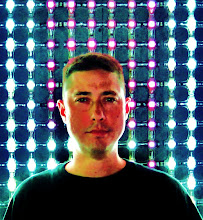KUTA, BALI, INDONESIA
Our goal today was to see some of the sights of central Bali while we're in the area, then head south to Kuta, the most popular tourist area of the island. Instead of taking a package tour, we figured it would be just as easy to hire a taxi driver for the day (only about US$30) and create our own itinerary. We managed to track down the guide that the Canadians had used yesterday, a nice guy named Kadek, who agreed to have his assistant take us to most of the places on our list.
I mentioned before how Ubud is known as a center for Balinese arts--painting, sculpture, woodworking, etc. But on our way out of town, the number of retail shops and workshops we passed, one after the other, was absolutely jaw-dropping--each was filled with hundreds of the most intricate wood carvings you can imagine, some over ten feet high. Often the carvers were on the floor of their shops, carving away at statues of dragons, people, and animals, as well as abstract designs. On the street we drove on alone, there were over
five kilometers of wall-to-wall wood carving stalls--just unbelievable.
Our first stop after leaving Ubud was at Tellalang, where we had a great view of the terraced rice fields that are common here in Bali. It's amazing how the farmers use every inch of space, carving hundreds of flat terraces into the steep hills--the whole landscape is just layer upon layer of green; just beautiful. I took a few pictures, then was besieged by several souvenir-sellers who just wouldn't take 'no' for an answer. I almost had to close the car door on one guy that was trying to sell me some chopsticks. Sheesh! I'm afraid that much of my next few months in SE Asia will be spent avoiding these people, which I'm not exactly looking forward to.
We then drove through winding roads to Tampaksiling, where we visited Gunung Kawi, an impressive site along a river where the hillside has been chiseled out into huge statue-like stone carvings. The carvings date to the 11th century, and the temple itself is still in use. In order to enter the site, we had to wear saris (provided at the entrance), and remove our shoes to walk through one of the most sacred areas. It's a very serene place, and quite beautiful, even though the carvings are heavily eroded.
Impressive Temple #2 on our list was Goa Gajah, or the Elephant Cave Temple, discovered in 1923 by a western archaeologist and excavated years later. (The "elephant" in the name actually refers to the Hindu god Ganesh, rather than actual elephants, which aren't found in Bali.) On walking down into the site, a guide immediately appeared and began showing us around the place, first telling us to wash in the holy water of the temple fountain, which we dutifully did. He then walked us into the elephant cave itself, which has an elaborately carved exterior, but inside is just a dark tunnel lit by candles, with a few shrines and some hollowed-out niches where monks used to sit and meditate.
In addition to the Hindu temple, there's an equally ancient Buddhist temple a short distance away, which the guide led us to. Well, it's actually no more than a few large moss-covered carved stone blocks sitting in a stream, since an earthquake in the 1800s collapsed most of the temple. Still, it was an impressive sight.
After pointing out a few more places of interest, our "guide" then asked us for money for his services--turns out he didn't officially work there, but was just a local guy with a little bit of knowledge about the place trying to make some cash, which I had pretty much figured out by then. He first suggested a tip of US$20, which we just laughed at--we ended up giving him a dollar, which was plenty!
After lunch at a little restaurant in the middle of some rice fields, our driver took us to our next destination, the Royal Temple of Pura Taman Ayun at Mengwi. Built in 1634, this served as the family temple of the Mengwi dynasty, whose kingdom survived until the late 1800s. It's famous for its exquisite wooden
merus, or pagoda-like shrines. We couldn't walk up to the shrines themselves, as they're surrounded by a moat and enclosed within a stone wall, but we could view them over the wall, and walk around the nicely-landscaped grounds, which were crisscrossed with paths and surrounded on three sides by a snaking river.
Our last temple of the day, appropriately, was the "Sunset Temple" of Tanah Lot, on Bali's southwest coast. This is the most famous of Bali's sea-temples, built in the late 15th or early 16th century, and it sits on a rocky island that can be reached from the shore at low tide. On the cliffs above are a maze of small shops and restaurants, where Chris and I had dinner overlooking the sea, watching the sun set behind the temple. Not surprisingly, it's Bali's most-photographed site.
It was getting dark, so we then had our driver drop us off in Kuta, the tourist hub of Bali. It's a crazy maze of neon-lit restaurants, nightclubs, temples, and hotels, along narrow "streets" that are really no more than alleyways. On a Friday night, it was crowded with hundreds of motorbikes, scooters, bicycles, and pedestrians, which we had to avoid as we wandered through the labyrinth looking for lodging. We soon came across the Hotel Sorga, which was recommended in the Lonely Planet guide, and booked a room there. For a "budget" hotel, it's pretty posh, with a beautiful garden courtyard complete with Hindu shrine, infinity swimming pool, and stone fountains. (Actually, many of the hotels and restaurants in Bali don't have much of a streetside facade, but have really spacious interiors with lots of courtyard greenery.)

